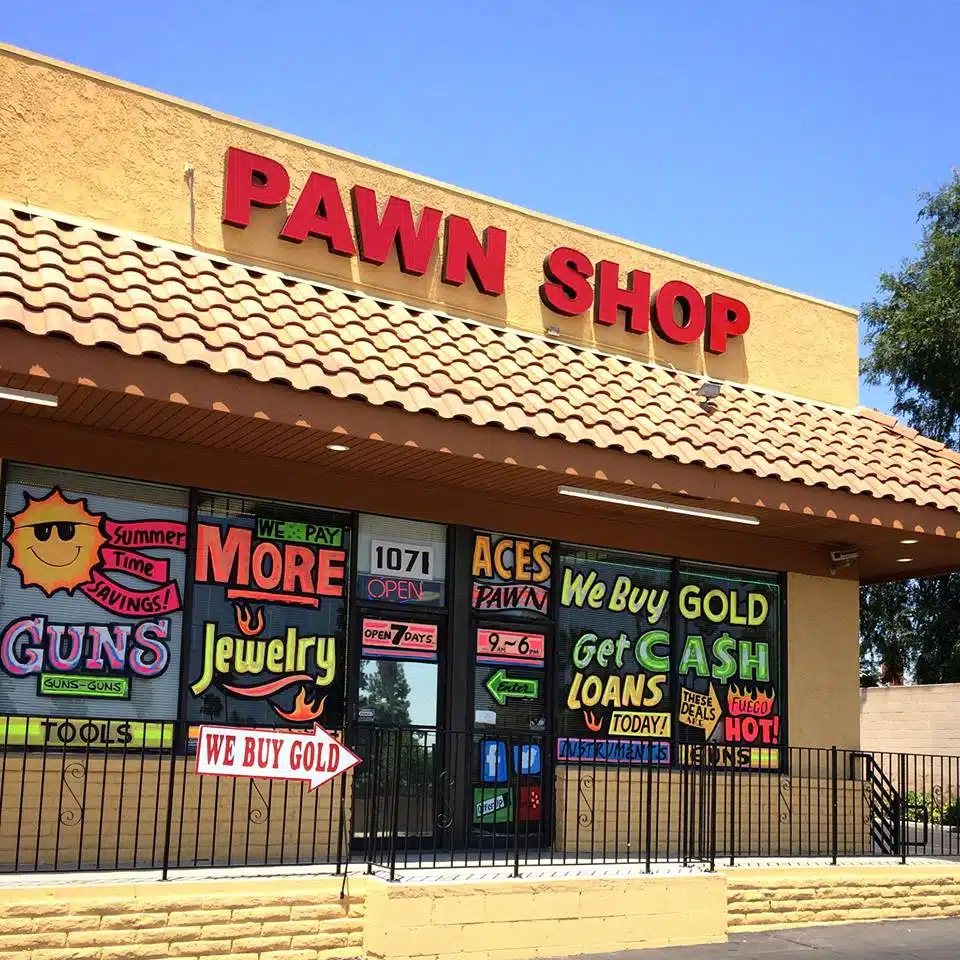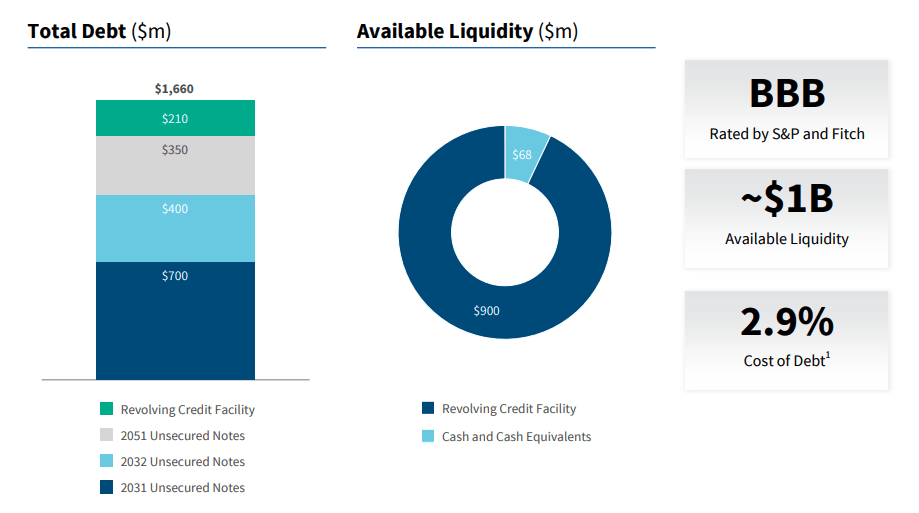Pawn Shop Technology: Modernizing a Traditional Industry
Pawn shop technology has revolutionized a centuries-old industry, transforming the way businesses operate and interact with customers. From the traditional paper-based system of the past, pawn shops have embraced digital […]

Pawn shop technology has revolutionized a centuries-old industry, transforming the way businesses operate and interact with customers. From the traditional paper-based system of the past, pawn shops have embraced digital tools and platforms, streamlining processes, enhancing security, and improving the overall customer experience.
This evolution has been marked by key milestones, including the introduction of point-of-sale systems, online marketplaces, and mobile applications. These technologies have not only modernized operations but also opened up new opportunities for pawn shops to reach a wider audience and compete in a more dynamic market.
The Evolution of Pawn Shop Technology
The pawn shop industry, like many others, has undergone a significant transformation due to the adoption of technology. From traditional paper-based systems to modern digital platforms, pawn shops have embraced technological advancements to streamline operations, enhance customer experiences, and improve efficiency. This evolution has been driven by a desire to adapt to changing customer expectations, reduce operational costs, and leverage data to make informed business decisions.
Traditional Pawn Shop Practices
Traditional pawn shops relied heavily on manual processes and paper-based documentation. Transactions were recorded on paper ledgers, and customer information was stored in physical files. These methods were prone to errors, required significant manual labor, and limited access to real-time data.
Advantages
- Simplicity and Familiarity: Traditional practices were straightforward and familiar to both pawnbrokers and customers.
- Personal Touch: The face-to-face interaction fostered a personal relationship between the pawnbroker and the customer.
Disadvantages
- Inefficiency: Manual processes were time-consuming and prone to errors.
- Limited Data: Paper-based systems provided limited insights into customer behavior and market trends.
- Security Risks: Physical files were vulnerable to theft, damage, and loss.
- Lack of Transparency: Customers often had limited visibility into the pawn shop’s inventory and pricing.
Key Milestones in the Adoption of Technology
The adoption of technology in pawn shops has been a gradual process, marked by several key milestones:
Point-of-Sale (POS) Systems
The introduction of POS systems revolutionized pawn shop operations by automating transaction processing, inventory management, and customer data entry. POS systems provided real-time data on inventory levels, customer transactions, and sales performance.
Online Platforms
The rise of e-commerce led to the development of online platforms for pawn shops. These platforms allowed customers to browse inventory, inquire about items, and even initiate transactions online. Online platforms expanded the reach of pawn shops, attracting a wider customer base and enabling them to compete in a global market.
Mobile Applications
The increasing use of smartphones and tablets led to the development of mobile applications for pawn shops. Mobile apps provided customers with on-the-go access to pawn shop services, allowing them to check inventory, track transactions, and receive notifications.
Contemporary Technology-Driven Approaches
Modern pawn shops leverage advanced technologies such as:
Cloud-Based Software
Cloud-based software provides a secure and accessible platform for managing inventory, customer data, and financial records. It enables real-time collaboration between pawnbrokers and staff, regardless of their location.
Artificial Intelligence (AI)
AI-powered tools are used to automate tasks such as item valuation, fraud detection, and customer service. AI algorithms can analyze large datasets to identify patterns and trends, providing valuable insights into customer behavior and market dynamics.
Blockchain Technology
Blockchain technology offers a secure and transparent way to record transactions and track the ownership of pawned items. It enhances the security of pawn shop operations and provides customers with greater confidence in the legitimacy of transactions.
Digital Tools and Platforms for Pawn Shops
The modern pawn shop landscape is increasingly reliant on digital tools and platforms to streamline operations, enhance customer engagement, and boost profitability. These digital solutions have revolutionized traditional pawn shop practices, providing a more efficient and transparent experience for both businesses and customers.
Inventory Management Systems
Inventory management systems are essential for pawn shops, facilitating the tracking and organization of a wide array of items. These systems offer a centralized hub for managing inventory data, including item descriptions, purchase dates, appraisal values, and loan details.
- Automated Valuation: Some systems integrate with external databases or pricing tools to provide automated valuation estimates, streamlining the appraisal process and ensuring consistent pricing across the inventory.
- Barcode and RFID Integration: Integration with barcode scanners and RFID technology allows for quick and accurate item identification and tracking, minimizing the risk of loss or misplacement.
- Real-time Inventory Visibility: Inventory management systems provide real-time visibility into stock levels, allowing pawnbrokers to identify popular items, manage inventory flow, and prevent stockouts.
- Reporting and Analytics: These systems generate comprehensive reports and analytics on inventory performance, helping pawn shops make informed decisions regarding pricing, purchasing, and marketing.
Customer Relationship Management (CRM) Platforms
CRM platforms empower pawn shops to manage customer interactions, build loyalty, and foster long-term relationships. These systems consolidate customer data, track interactions, and provide insights into customer behavior.
- Customer Profiling: CRM platforms allow pawn shops to create detailed customer profiles, capturing information such as contact details, purchase history, loan repayment patterns, and preferred communication channels.
- Personalized Communication: With CRM platforms, pawn shops can personalize communications with customers, sending targeted marketing campaigns, promotional offers, and reminders based on individual preferences and past interactions.
- Customer Segmentation: CRM platforms enable pawn shops to segment their customer base into groups based on demographics, purchase behavior, or loan activity. This allows for tailored marketing strategies and more effective customer engagement.
- Customer Service Automation: Some CRM platforms integrate with live chat and chatbot functionalities, automating customer service inquiries and providing instant responses to common questions.
Online Marketplaces
Online marketplaces have emerged as a crucial channel for pawn shops to expand their reach and attract a wider customer base. These platforms provide a virtual storefront where pawn shops can list their inventory, connect with potential buyers, and facilitate online transactions.
- Increased Visibility: Online marketplaces offer greater visibility to pawn shops, allowing them to reach customers beyond their local area and tap into a wider pool of potential buyers.
- 24/7 Accessibility: Online marketplaces are accessible 24/7, allowing customers to browse inventory and make purchases at their convenience.
- Enhanced Sales Potential: Online marketplaces can significantly boost sales potential by exposing pawn shops to a larger audience and facilitating online transactions.
- Streamlined Transaction Process: Online marketplaces often provide integrated payment processing and shipping options, simplifying the transaction process for both buyers and sellers.
Hypothetical Scenario: Integrating Digital Tools for Enhanced Efficiency and Customer Experience
Imagine a pawn shop that utilizes a comprehensive inventory management system, a robust CRM platform, and an online marketplace to optimize its operations and enhance the customer experience.
- Scenario: A customer enters the pawn shop and wants to sell a gold necklace. The pawnbroker uses a barcode scanner to quickly identify the item and access its details within the inventory management system. The system automatically provides an estimated value based on market data and the item’s condition.
- CRM Integration: The pawnbroker enters the customer’s information into the CRM platform, creating a profile that captures details such as contact information and purchase history. The system identifies that the customer has previously purchased a watch from the shop and suggests a personalized offer based on their past buying behavior.
- Online Marketplace Integration: After agreeing on a price, the pawnbroker lists the necklace on the shop’s online marketplace, ensuring wider exposure and potential buyers. The online platform streamlines the transaction process, allowing customers to make secure online payments and track the shipment.
Security and Fraud Prevention in Pawn Shop Technology

In the modern pawn shop landscape, technology plays a crucial role in enhancing security and preventing fraud. From robust security measures to advanced fraud detection algorithms, pawn shop technology aims to protect both the business and its customers.
Biometric Authentication
Biometric authentication provides a high level of security by verifying a person’s identity based on unique biological characteristics. This method offers a more secure alternative to traditional password-based authentication, significantly reducing the risk of unauthorized access to sensitive data and transactions.
- Fingerprint Scanning: This widely adopted method captures and analyzes fingerprint patterns for identification, providing a reliable and convenient authentication mechanism.
- Facial Recognition: Utilizing facial features, this technology compares live images with stored biometric data to authenticate users. Facial recognition is increasingly deployed in pawn shops for identity verification and access control.
- Iris Scanning: This highly accurate method scans the unique patterns in the iris, offering a robust and secure authentication solution. Iris scanning is commonly used in high-security environments, but its implementation in pawn shops is gaining traction.
Data Encryption
Data encryption safeguards sensitive information by converting it into an unreadable format, making it inaccessible to unauthorized individuals. This crucial security measure is vital for protecting customer data, financial transactions, and other sensitive information stored in pawn shop systems.
- Encryption at Rest: This method ensures that data is encrypted while stored on servers or other storage devices, protecting it from unauthorized access even if the system is compromised.
- Encryption in Transit: This technique encrypts data during transmission between systems, safeguarding it from interception and unauthorized access during data transfer.
Fraud Detection Algorithms
Advanced fraud detection algorithms play a critical role in identifying and preventing fraudulent activities in pawn shop operations. These algorithms analyze various data points, including customer behavior, transaction history, and item details, to detect potential fraud.
- Anomaly Detection: This algorithm identifies unusual patterns or deviations from expected behavior, flagging potential fraudulent transactions for further investigation.
- Machine Learning: Machine learning algorithms analyze historical data to learn patterns and identify fraudulent activities, constantly adapting to evolving fraud tactics. These algorithms can detect complex patterns that might be missed by human analysts.
- Real-Time Monitoring: Real-time fraud detection systems continuously monitor transactions and customer behavior, alerting staff to suspicious activities as they occur. This allows for prompt intervention and mitigation of potential fraud attempts.
Cyberattacks and Data Breaches
Pawn shops, like any other business, are vulnerable to cyberattacks and data breaches. These attacks can disrupt operations, compromise sensitive information, and damage the reputation of the business.
- Malware: Malicious software can infiltrate systems, steal data, or disrupt operations. Implementing robust antivirus software and regular system updates can help mitigate this threat.
- Phishing Attacks: These attacks trick users into revealing sensitive information, such as login credentials or financial details. Educating employees and customers about phishing tactics and implementing secure email practices can reduce the risk of falling victim to these attacks.
- Denial-of-Service (DoS) Attacks: These attacks overwhelm a system with traffic, making it unavailable to legitimate users. Employing firewalls and intrusion detection systems can help prevent DoS attacks and ensure continuous operations.
Mitigating Cyber Security Risks
- Regular Security Audits: Conducting regular security audits helps identify vulnerabilities and implement necessary security measures to protect systems from attacks.
- Employee Training: Educating employees about cybersecurity best practices, such as strong password hygiene and phishing awareness, is crucial for preventing breaches and protecting sensitive information.
- Data Backup and Recovery: Maintaining regular backups of critical data allows for quick recovery in the event of a data breach or system failure. This ensures business continuity and minimizes downtime.
- Incident Response Plan: Having a comprehensive incident response plan Artikels steps to be taken in the event of a security breach, ensuring a coordinated and effective response.
The Impact of Technology on Pawn Shop Operations
The integration of technology into pawn shop operations has revolutionized how these businesses function, impacting various aspects from inventory management to customer interactions. Technology has significantly enhanced efficiency, accuracy, and transparency in pawn shop operations, leading to a more streamlined and secure environment for both customers and businesses.
Inventory Management, Pawn shop technology
Technology has significantly simplified and improved inventory management in pawn shops. Traditional methods often involved manual record-keeping, which could be prone to errors and time-consuming. Modern pawn shops leverage sophisticated software solutions that streamline inventory management, allowing for accurate tracking of every item in the shop.
- Barcode and RFID Scanning: Barcode and RFID scanning technology enable quick and accurate tracking of items, reducing the risk of errors associated with manual record-keeping. This technology allows for real-time inventory updates, making it easier to monitor stock levels and identify missing or misplaced items.
- Digital Catalogs: Digital catalogs provide a centralized repository for all inventory items, making it easier for pawnbrokers to search and manage their stock. These catalogs can include detailed descriptions, images, and pricing information, allowing for efficient inventory organization and management.
- Automated Valuation Systems: Advanced software solutions can help pawnbrokers determine the fair market value of items, reducing the risk of overpaying or underpaying for collateral. These systems leverage historical data, market trends, and other factors to provide accurate valuations, improving efficiency and reducing the potential for disputes.
Customer Service
Technology has transformed customer service in pawn shops, making interactions more efficient and convenient for both customers and pawnbrokers. Traditional methods often involved lengthy wait times and limited communication channels. Technology has enabled pawn shops to offer a more personalized and streamlined customer experience.
- Online Platforms: Online platforms allow customers to research items, browse inventory, and even apply for loans online, eliminating the need for physical visits for basic inquiries. This convenience attracts a wider customer base and enhances customer satisfaction.
- Mobile Apps: Mobile apps offer a convenient way for customers to manage their pawn transactions, track loan payments, and receive notifications. This accessibility enhances customer engagement and strengthens the relationship between the pawn shop and its customers.
- Customer Relationship Management (CRM) Systems: CRM systems help pawn shops manage customer interactions, track customer preferences, and personalize communication. This data-driven approach allows for better customer service and targeted marketing efforts, leading to increased customer loyalty.
Financial Transactions
Technology has significantly streamlined financial transactions in pawn shops, making them faster, more secure, and more efficient. Traditional methods often involved manual processing, which could be prone to errors and delays. Technology has enabled pawn shops to automate and digitize financial transactions, improving efficiency and reducing the risk of fraud.
- Point-of-Sale (POS) Systems: POS systems allow pawnbrokers to process transactions quickly and accurately, reducing the risk of errors and streamlining the checkout process. These systems can integrate with various payment gateways, allowing for flexible payment options.
- Digital Loan Management Systems: Digital loan management systems allow pawnbrokers to track loan terms, manage payments, and generate reports automatically. These systems reduce the risk of errors associated with manual record-keeping and provide valuable insights into loan performance.
- Electronic Funds Transfer (EFT): EFT enables pawn shops to receive and disburse funds electronically, reducing the risk of cash handling and improving security. This method also allows for faster processing times and reduced transaction costs.
Future Trends in Pawn Shop Technology
The pawn industry is on the cusp of a technological revolution, with innovations poised to transform the way pawn shops operate and interact with customers. From enhanced security measures to personalized customer experiences, technology will play a pivotal role in shaping the future of pawn shops.
The Rise of Artificial Intelligence (AI)
AI will be instrumental in streamlining pawn shop operations and enhancing customer service. AI-powered chatbots can provide 24/7 customer support, answering common queries and guiding customers through the pawn process. AI algorithms can also be used to assess the value of items, reducing the need for manual appraisals and improving efficiency.
Blockchain Technology: Enhancing Transparency and Security
Blockchain technology offers a secure and transparent platform for tracking transactions and managing inventory. This decentralized ledger system can help prevent fraud and counterfeiting, increasing trust and security within the pawn industry.
Final Wrap-Up
The future of pawn shop technology is bright, with exciting advancements on the horizon. The integration of emerging technologies like artificial intelligence, blockchain, and virtual reality promises to further enhance efficiency, security, and customer engagement. As technology continues to shape the industry, pawn shops are poised to embrace innovation and redefine their role in the modern financial landscape.
Pawn shops are increasingly adopting technology to streamline their operations, from inventory management to customer interactions. One key area where technology plays a crucial role is in the security and visibility of their merchandise, often using advanced surveillance systems and point-of-sale software.
This is similar to how window technology has advanced, allowing for greater security and energy efficiency in buildings. The integration of technology in pawn shops is crucial for enhancing security, improving efficiency, and ultimately, ensuring a positive customer experience.








